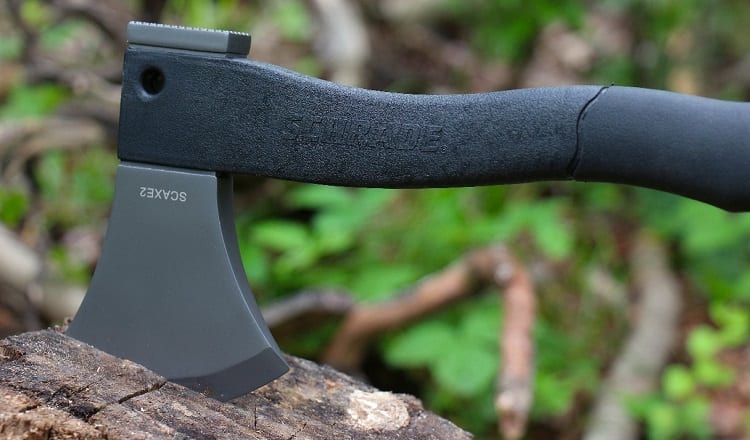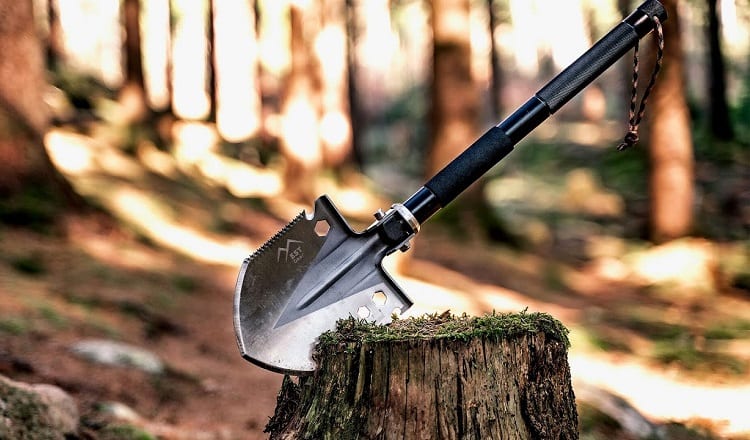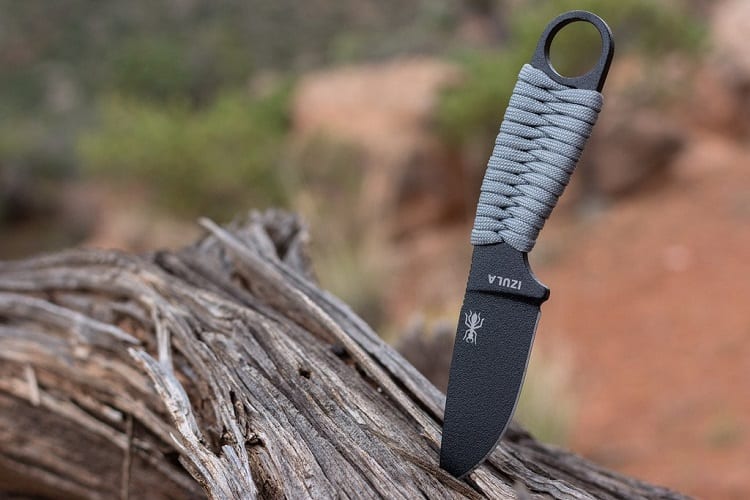Yes and no!
You can’t just walk up to someone with a Swiss Army Knife and expect to either intimidate them, or deal enough damage that you can escape. They’re not self-defense weapons, even though they are classified as utility and survival tools.
Survival weapons are a different breed, and come with so many more restrictions than tools. You could take a razor-sharp hatchet and deal some major damage to property or people in self-defense, but because it’s designed as a tool and not a weapon, you’re able to buy it.
However, when something is solely classified as a survival weapon, you run into a low glass ceiling.
We’ll go over what you can expect with self-defense and survival tools so you have a clear understanding of what you’re able to do. It’s not as transparent as you think.
Not All Survival Tools are Weapons
We hear survival, and we get this gritty idea in our head. Not everything you use in your survival toolkit is a weapon.
Yes, you can be ingenuitive and turn something into an advantageous tool in your situation, and you may be led to use whatever is in your hand as a weapon. Does that constitute a survival tool as a weapon?
Absolutely not!
When you research your survival gear, or read our buying guides on survival gear, not everything you see is a weapon.
In fact, almost nothing you see is a weapon unless it’s specifically labeled as such by the manufacturer. Weapons and self-defense weapons are completely different classifications of objects from tools.
It comes down to how you use it, or rather, how you’re forced to use it in certain circumstances. We’ll cover intent and using your tool as intended to avoid potential issues.
What Survival Tools Can be Used as Weapons?

In a pinch, and with a steady hand, you could use the following as weapons in self-defense scenarios.
Survival Hatchet
These are pretty obvious, but they do the trick. There’s no subtlety here: if an assailant sees you with a hatchet, they know you’re a threat.
You can’t really conceal it like you can with tactical pens and flashlights. A survival hatchet will generally be handheld, operable with one hand, and provide a carbon steel edge that retains a seriously sharp finish.
In experienced hands, you could use a survival hatchet swiftly and defend yourself with relative ease. Nobody is going to run at someone who’s swinging a hatchet, and if they do, it just tells you that you’re going to have an easy time defending yourself.
Survival Shovel
Survival shovels require a lot of dexterity to use properly. They can be somewhat difficult to swing when you have wind resistance working against you and a 36” shaft, but they can get the job done.
Thanks to the razor sharp edge and serrated edge – which are there to help removing frozen ground or hardened soil – you can fend off an attacker in one or two swings. Survival shovels are built strong enough to have hundreds of pounds of pressure forced upon them.
You can find plenty of marketing material for a lot of shovel manufacturers where they show hefty men standing on the shovel blade; these aren’t going to give out on you after one or two swings in a self-defense situation.
Ice Pick
It sounds like something out of a Mad Max film, but an ice pick can be used as a rather ruthless self-defense weapon in the event that you need one. Designed out of durable, corrosion-resistant metals, most ice picks have a sharp end and jagged edge to firmly hold onto ice.
On the flip side of this utility, it’s also a deadly weapon in swift hands. Ice picks are never designed for self-defense, but then again, neither are survival hatchets.
Tactical Pen
Tactical pens would only be useful if you’re in close quarters. These aren’t going to help you fend off a gunman (then again, most of these tools won’t), but in the right circumstances, it can be used for self-defense.
Because a pen is unsuspecting, you can hold onto it until the right time before striking. Tactical pens are made out of aircraft grade aluminum, giving a nice weight and power to the body. With sharp ends and high levels of bend resistance, these won’t give out on you anytime soon.
Tactical Flashlight
Seems a bit odd to brand this as a potential weapon, right?
It seems like this small object wouldn’t do much, but you’d be surprised. If an assailant approached you, a true tactical flashlight will have a burst mode that sends a blinding flash of light directly into their eyes.
I did not say blinding with abandon: this can temporarily blind assailants for minutes at a time, leaving them disoriented and without direction. Instincts will kick in and they’ll be forced to cover their eyes.
It’s a self-defense weapon and a deterrent to harm, but because these flashlights usually have striking pommels and/or jagged bezels around the top of the flashlight, it can be used to quickly blind someone and then strike them specifically to immobilize them.
This paints you as a threat, and there are no laws around how many lumens you can have in a flashlight.
Nobody is expecting you to not defend yourself if you have to, and these self-defense tools end up coming in handy when you need them most.
What You Should Watch Out For

To be quite frank, you need to watch out for yourself. How are you carrying your tools? Are they sheathed if they have a sharp blade? Are they being treated with care, stored when not in use, and not just laying around?
Be smart about how you present, utilize, and store your survival tools. If you’re competent, careful, and respect what your tools are capable of, you will present yourself in a responsible and respectful manner.
It’s the buffoons that leave tomahawks and bowie knives in the middle of a campsite that end up running into problems.
Last but not least, you should only use survival tools as weapons in self-defense situations. Anything less than that and you’ll be in the wrong as far as the law is concerned. Use these tools intelligently, and hope that they never need to be used as weapons.
Legality of Knives and Tactical Tools

Local laws. Municipalities create local laws that affect what knives you can buy, how long a blade can be, and so much more. For survival tools, which have a dedicated purpose, there may be some leniency.
Knives cannot be over a certain length in most states. That length depends on localized laws, which are always changing one way or the other. Other legal issues you might run into is if a knife is serrated or spring-activated. Again, this depends on the state.
But we’ve all pictured the situation where you’re using a tool, and you’re approached by either a police officer, or someone who wants to mind other peoples’ business.
They say that you have an illegal or prohibited weapon, to which you have to reply in some way or another. If it’s a tool, and it’s exclusively being used as a tool, then there’s no case.
It would defend on the specific officer as well.
If you’re approached, and you show responsible tool handling and do not wield it when making conversation with them (ask them to excuse you a second, sheath the hatchet/machete, and place it somewhere safe), there’s no reason to assume it’s being used as a weapon.
I wouldn’t “open carry” a hatchet while walking into a Walmart and claim it’s a tool; use common sense, understand that intent matters, and you should be fine to use tools as tools. Hypothetically, in an SHTF situation, anything goes and your tools can be used in self-defense if the need arises.
The Bottom Line
Survival tools aren’t designed to be weapons. In self-defense (or if you’re John Wick), you can use just about anything to defend yourself.
How you use it is just as important as its primarily function. There are plenty of people who wouldn’t even know how to use a self-defense weapon properly, let alone apply a survival tool to that same mindset and objective.
The bottom line is this: carry what you are legally allowed to for a dedicated self-defense weapon. Make sure that any tools you use that fall outside of blade length parameters and laws for weaponry is exclusively used as a tool.


[lasso rel="emergency-preparedness-more-a-manual-on-food-storage-and-survival-2nd-edition-revised-and-updated" id="35334"]